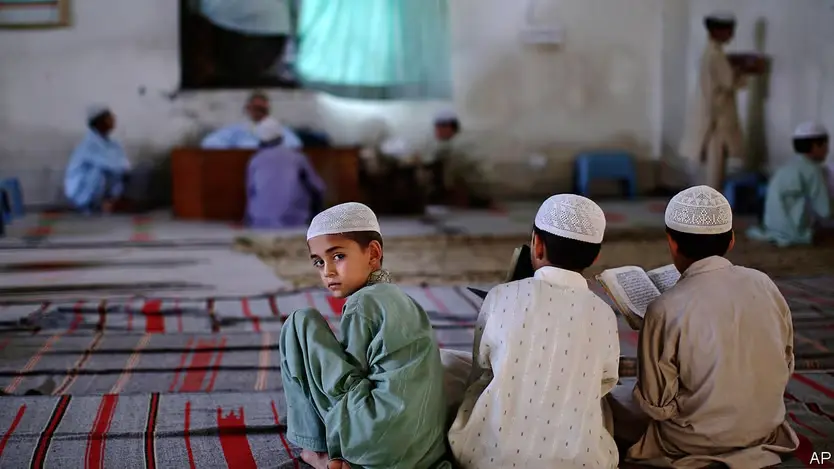Since the COVID-19 pandemic, the significance and centrality of digital infrastructure and connectivity have come to light. The pandemic rendered many businesses helpless due to their reliance on traditional connectivity methods. China re-boosted the Digital Silk Road, initially announced in 2015, in 2022. The central agenda of the DSR was to enhance digital connectivity and infrastructure by exporting 5G and artificial intelligence technologies. It aimed to localize e-commerce and reduce exposure to cyber-attacks, highlighting health, education, and business opportunities disparities. The pandemic revealed the digital divide, showing gaps in health infrastructure, online education access, and e-commerce business opportunities. The DSR reduced reliance on traditional connectivity methods, offering a chance to integrate the entire system digitally.
China As a Global Technology Hub
The Digital Silk Road envisioned President Xi’s goal of making China “the global innovation and technology hub”.
The central purpose of DSR was to revolutionize China’s ICT industry, but it strengthened internet connectivity in South Asia, Africa, and parts of Europe.
Nevertheless, the development of the Digital Silk Road offers developing countries like Pakistan an opportunity to bridge the digital divide.
China launched PEACE (Pakistan East Africa Connecting Europe) and CPFOP (China Pakistan Fiber Optic Project) to enhance connectivity. CPFOP’s 820km cable aims to provide 3G/4G services in specific regions. These projects could create job opportunities in digital services like online education and healthcare apps. However, these projects necessitate the preference of local businessmen over foreign entrepreneurs.
![The "Digital Silk Road" could drive a green transformation in infrastructure and economic models across emerging markets [Image via Reuters].](https://southasiatimes.org/wp-content/uploads/2024/06/GKrU2UZ_YtQvpJfc72vDup4n-TDy37pzafoTs4YQA9I.webp)
A Less Vulnerable Pakistan
In 2017, Major Gen. Amir Azeem Bajwa, the then director general of SCO, told a parliamentary committee on information technology that much of Pakistan’s internet traffic was routed through India. This raised fears that sensitive data was vulnerable to hacking. According to local reports, that was when Bajwa sought approval for an alternative network to service Gwadar that avoided India.
Pakistan, which was previously reliant on India for its internet cable will now have a direct connection from China. This will presumably protect Pakistan from the surveillance and espionage risks it faced from India. Since these cables transfer sensitive data, the risk of India intercepting Pakistan’s communications has now been reduced.
While evaluating the Digital Silk Road’s benefits, we must acknowledge China’s surveillance and data exploitation risks. In the US-China tech war, China seeks data for Artificial Intelligence (AI). It could acquire this from countries linked by PEACE cable or projects like BeiDou navigation. Due to these concerns, the United States and other European countries have labeled it as tech-enabled authoritarianism.
China’s extensive AI and cyber warfare expertise can spill over, aiding Pakistan in developing its cybersecurity and safeguarding critical infrastructure.
Also See: Crossroads of Power: Decoding CPEC Geopolitics
What Does This Mean For Pakistan?
What do these technologies and infrastructure mean for Pakistan? The Digital Silk Road envisions practical changes, such as developing smart cities where phone applications manage everything, from agriculture to health facilities. Technology will enable monitoring of the condition of crops and enhancing urban infrastructure and services. Smart cities may adopt 5G swiftly, even in underdeveloped areas like Gwadar Port, North Kashmir, and Gilgit-Baltistan.
The Digital Silk Road’s expansion will enhance business operations by extending e-commerce to diverse areas, enabling swift operations. Digitalizing rural areas via DSR connects populations, transforming their information and communication infrastructure. Enhanced connectivity boosts efficiency, productivity, and regional economic growth.
Ease of Cultural Barriers
The expansion of DSR will ensure smooth trade operations which will reduce trade and cultural barriers. Moreover, it will open opportunities for women’s inclusion in e-commerce businesses, enabling participation from home. Digital infrastructure aids government oversight of provincial development through e-government portals.
These developments will in turn contribute to enhance the investment climate of the country and make the regions associated with DSR feasible for Foreign Direct Investment (FDI). In case of terrorism and other insurgency threats which are more persistent in the Baluchistan region, the DSR will contribute to increase the surveillance and tracking capabilities of the region to track the terrorist activity.
![The Belt and Road Initiative (BRI), including the China-Pakistan Economic Corridor (CPEC), spans 68 countries, 62% of the world population, and 33% of global GDP [Image via Pakistan Politico].](https://southasiatimes.org/wp-content/uploads/2024/06/Copy-of-SAT-RT-May-2024-Website-1.webp)
Remote Area Broadcasting
In addition, another aspect of DSR is the provision of Digital Terrestrial Multimedia Broadcasting (DTMB), which will lead to High Definition (HD) broadcasting even in remote areas. This can contribute to forging of cultural bonds and inculcating a sense of homogeneity by capitalizing on the power of electronic media.
However, even though digital connectivity could prove to be the missing link in solving the problem of terrorism in Pakistan, the persistence of terrorism and cultural barriers pose the biggest threat to the advent of digital connectivity.
If Pakistan is unable to overcome these challenges, they could impede the expansion of DSR, as MNCs would hesitate to invest in a country that is prone to terrorism and consequently has unstable conditions to keep the environment favorable for foreign investors. Moreover, the aversion of the rural people to technology and their lack of adaptability might pose a challenge for the budding local e-commerce businesses.
The downside of DSR is that countries like Pakistan and other East African countries can get caught in the crossfire of the breeding tech war between China and the United States. Nonetheless, it allows Pakistan to boost its digital infrastructure and harness it to create integration.
The views expressed in this article are the author’s own. They do not necessarily reflect the editorial policy of the South Asia Times.






